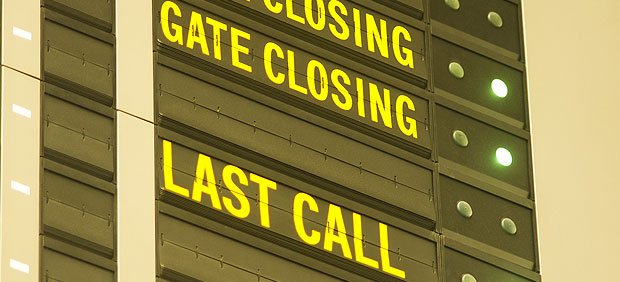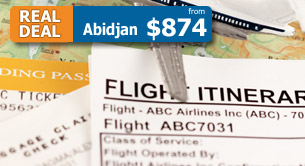
FOLLOW Fareboom
Easy Guide to Decoding Airline Jargon
By Mirela Necsutu, Wed, Sep 4, 2013Airlines love jargon. They load their websites with acronyms, slip technical terms onto their tickets and have a long history of using ads filled with fine print.
And of course, not every traveler knows what all this stuff means. Although you could easily book a flight without understanding the finer points of airline lingo, it’s a good idea to familiarize yourself with a few basic terms so you know exactly what you’re getting.
So give this super-simple guide to deciphering airline jargon a scan to make sure your ticket doesn’t come with any unwanted surprises.
Direct flights versus non-stop flights
These are likely the two most commonly confused airline travel terms. When travelers say they want a direct flight they usually mean they want a non-stop flight. Here’s the difference:
A Direct flight is a trip between two airports with no change in the flight number. But there’s a catch: the plane will stop at an intermediary airport to pick up passengers or luggage. You won’t have to leave the plane, however.
A non-stop flight is most travelers’ top choice. On these flights, you’ll go directly to your destination with no stops at all.
Cracking the fare basis codes
Fare basis codes are packed with information about a fare. These little snippets of data are usually found on the ticket or online at the time of booking. This information is especially useful when contacting an airline with questions about mile credit, upgrading your ticket to a higher cabin or tweaking your travel dates. Each fare basis code comes with its own set of rules, since each one indicates a unique fare.
Although airlines don’t all use the exact same conventions when creating their codes, having a general understanding of the type of information contained within them can give you some added peace of mind.
A fare basis code might look something like this: HXL14LNR. Here’s what it means:
- H – The class of service required for the fare. ‘H’ is often an economy class, but airlines use a variety of letters to indicate different service levels and restrictions. The same economy class seat may be sold for up to 10 different prices at any given time and the class of service defines what price you are getting.
- X – Day of week (X – weekday, W – weekend)
- L – The season required (in this case: L – low, K – shoulder, H – high, P - peak)
- 14 – The number of days you’ll need to book the ticket in advance of your departure flight.
- L – Refers to “long-haul” flights.
- NR – Means non-refundable.
Fareboom.com displays fare basis codes within each flight itinerary along with fare rules to help you understand precisely what kind of fare you are purchasing.
If you encounter a fare basis code that makes you a little uneasy, just call the airline and ask them about it.
A quick guide to airline lingo
Here’s a brief summary of some of the most confusing terminology used by airlines.
- Blackout days: Specific days that the airlines won’t give travelers special rates or promotional fares because of the high demand for flights.
- Block spacing: When one airline allocates a number of seats to be sold by another airline.
- Bumped: This one can be either really good or really bad. When a flight is oversold, travelers can sometimes be “bumped” up to business or first class. However, it’s more likely that you will have to be put on the next flight that’s available. Checking in as early as possible can decrease your chances of getting bumped.
- Code share: When two airlines agree to share their flight codes. This means travelers purchasing one airline’s ticket might be flying on a different carrier’s plane. The trip is given two flight numbers because it’s marketed by two airlines as their flight. If you are sensitive about which airlines you fly be sure to check the operating carrier in addition to the marketing carrier.
- Non-endorsable: A ticket that can’t be used to fly with another airline. Pretty much all tickets are non-endorsable because airlines are hesitant to share revenue unless they’re in an alliance.
- Seat pitch: Do you need a lot of legroom? You might want to watch for this one. Seat pitch is the distance between seats at the level of your knees. For economy class, the industry standard is 31-32 inches.
- Situated In, Ticketed In (SITI): When travelers buy the ticket from the country they are leaving.
- Situated Out, Ticketed Out (SOTO): When the traveler buys the ticket from their destination country.
- Split ticketing: Using two single tickets instead of one to get a better deal on the fare. But beware: split-tickets can be risky because you lose baggage and delay protection. Split-tickets also mean that you have two separate contracts with the airline, which can make things a little more complicated. For connecting flights, domestic rules apply to the domestic portion (such as zero free baggage allowance) and international rules apply to the other portion. And if your flight is delayed, the airline won’t work with you to get you to your final destination because you purchased so-called non-through fares.
- Standby fare: A discounted ticket that doesn’t guarantee you a seat. Although airlines have different policies on standby tickets, passengers are usually boarded on a first-come, first-served basis.
- Walk-up fare: When you purchase a last-minute flight – normally within three days of the departure—that’s considered a walk-up fare.
Do you have any airline jargon you'd like to add? You can do so by commenting below.









